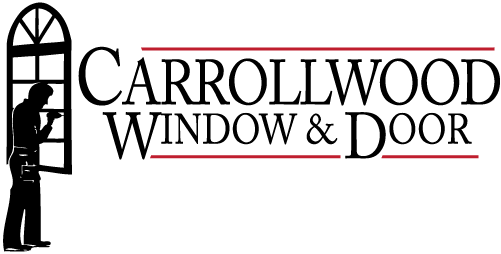Door Terminology
Just like any specialty service or different categories of business, industry jargon for windows and doors has its own special language. In fact, the terminology can be quite confusing. There are many different terms used to describe the same parts or features of a window or door. Enough to make your head spin.So, when you’re in the market for new windows and doors, whether for new home construction or for an upgrade of your current home, it helps to understand what the key terms are. A little knowledge of terms can go a long way.
Here at Carrollwood Window & Door, we believe that an educated consumer makes better, more considered choices when it comes to their home construction or upgrades. That’s one of the reasons why we’re offering you this comprehensive glossary of window and door terminology so that you can navigate this language more easily.
So, let’s start with door terminology:
- Frame: The exterior structure of a door that is installed in the jamb. It provides the support for the door leaf and other components. The frame can be plain and simple, or it can be decorative with added moldings or designs.
- Head Jamb: The top horizontal part of the door frame.
- Side Jambs: The vertical pieces of the door frame. They form the sides of the
door opening. These are vital in a door’s construction since this is where thehinges are placed to hang the door and where the striker plate is installed on the
other side for the door lock. - Overdoor: This is also referred to as a “sopraporte” in Italian or a “supraporte” inGerman. The overdoor is a painting or decorative panel, usually in a horizontal format, that can be set within ornamental moldings and placed over the head jamb for decoration.
- Threshold: The horizontal part at the bottom of the door frame. It supports the door leaf and seals against water intrusion.
- Door Leaf: The part of a door that swings in or out and contains the hardware and door panel.
- Panel: A subdivision of the door leaf.
- Lock Plate: The metal plate on the jamb where the door lock engages.
- Strike Plate: The metal plate on the door leaf where the latch engages.
- Knob/Handle: The component used to open and close the door.
- Deadbolt: A locking device that extends into the jamb, providing additional
security. - Hinges: The hardware that connects the door leaf to the frame.
- Pre-Hung Door: A door that is already attached to a frame and is ready to install
in a rough opening. - Solid Core Door: A door with a solid wood core, providing better insulation and
soundproofing than hollow core doors. - Fire Door: A door that meets specific fire-resistant standards.
- Storm Door: An additional door that is installed over the main door to provide
additional protection from the elements.
Window Terminology
Now, let’s look at the terminology for windows:
- Frame: The exterior structure of a window that is installed in the wall. It provides
the support for the sashes and other components. - Sill: The horizontal part at the bottom of the window frame. It protects the window
from water damage and provides a surface for drainage. - Jamb: The vertical parts of the window frame. They form the sides of the window
opening. - Casement Window: A window that swings open to the side.
- Double Casement Window: A casement window with two sashes that swing open
to opposite sides. - Sash: The movable part of a window that contains the glass. It can be fixed or
moveable. - Mullion: A vertical or horizontal bar that divides the panes of glass in a sash.
- Glazing: The process of installing glass in a window sash.
- Glazing Bead: The molding around the perimeter of the glass that seals it in the
sash.
- Grille: Decorative bars or muntins used to separate the glass into smaller panes.
The muntins are the vertical interior pieces, stiles and rails refer to the outer
pieces. - Transom: A fixed or moveable window above a door.
- Awning Window: A window that swings outward from the bottom.
- Hopper Window: A window that swings outward from the top.
- Bay Window: A window unit that projects out from the wall, creating an alcove.
- Single-Hung Window: A window with one vertically sliding sash. The lower sash
is movable, and the upper sash is fixed. - Double-Hung Window: A window with two vertically sliding sashes. Both sashes
can be opened to vent the window from either the top or bottom. - Sliding Window: A window with two sashes that slide horizontally past each
other. - Jalousie Window: A window with multiple horizontal glass panes that rotate open
or closed.
So, there you have a basic overview of common window and door terminology. With 32 successful years and an outstanding track record of installing windows and doors in the Tampa Bay area, you can trust Carrollwood Window & Door to help keep our clients well-versed in the terms they need to know to make the right choices for their homes.
Give us a call or contact us. Stop by our showroom today.
